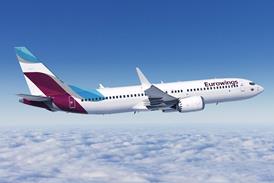Regulators impose requirements aimed at ensuring double-deck giant’s crashworthiness matches existing airliners
The US Federal Aviation Administration and European Aviation Safety Agency are seeking to make Airbus prove that passengers’ chances of survival in an A380-800 crash are equal to or better than in any other airliner. That new standard may be part of 10 special conditions imposed on certification approval for the A380. Each proposed proviso would fill gaps in airworthiness regulations created by the unique size and design of the A380. Airbus says the proposals pose no threat to final certification, but merely reflect the regulators’ routine procedure for judging all new aircraft designs.

The A380’s full-length double-deck layout is the source for most of the special conditions, including the crash-survivability test. In that case, the FAA wants to create a new reference point – the “limit of reasonable survivability” – that would analyse and compare the survival chances of a passenger in the A380 with other Airbus aircraft.
The provision would quantify how the vertical descent rate of each aircraft would influence the probability of survival “in an otherwise survivable incident”. The A380 must show it offers “equal or better characteristics at the same vertical descent rate” as other aircraft, according to the FAA proposal. The FAA proposal notes the A380’s greater volume should allow the airframe to absorb more energy on impact, which could reduce the forces felt by passengers and increase their chances of surviving the crash. Airbus also must prove the A380’s structure can reasonably hold seats, overhead bins and other items in place during a crash.
Among the other special conditions are proposals to ensure the A380’s escape slides deploy on both decks without interfering with each other, passengers can move between decks during an emergency evacuation, and that smoke generated in the dispersed electrical bays can be contained.
Airbus says it is “in the process of certificating the A380, and none of these requirements has yet been complied with because the certification is not yet completed. All of the special conditions will be complied with as part of the certification programme, which will result in type certification next year.”
- Airbus has begun the A380’s flutter-test campaign, which it expects to complete within 10 or 15 flights. The trials will be flown at progressively higher speeds up to the ultra-large aircraft’s maximum of 375kt (690km/h)/Mach 0.96. The test campaign also involves tests at different weights and with various fuel-distribution configurations.
STEPHEN TRIMBLE / WASHINGTON DC
Source: Flight International























